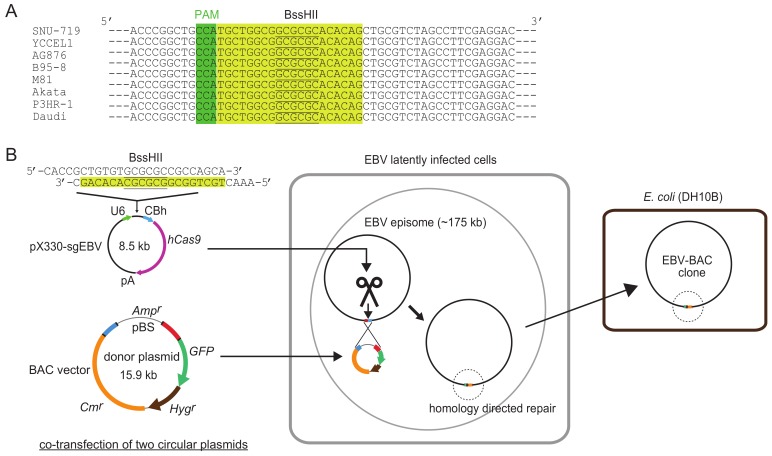Figure 1.
Schematic illustration of clustered regularly interspaced short palindromic repeats (CRISPR)/Cas9-mediated Epstein-Barr virus (EBV)-bacterial artificial chromosome (BAC) cloning. (A) CRISPR/Cas9 target sequence used for EBV-BAC cloning. Twenty bp sequences are shaded in yellow, and PAM sequences (5′-NGG) are shaded in green. BssHII sites are underlined. Note that the target sequence is 100% conserved among representative EBV strains so far sequenced. (B) Outline of EBV-BAC cloning. EBV latently infected cells are transfected with two circular plasmids (pX330-sgEBV and a donor plasmid). CRISPR/Cas9-mediated cleavage of EBV genome DNA stimulates homology-directed repair, and transgenes are integrated into EBV episomes via homologous recombination. EBV-BAC clones can readily be obtained by transforming DH10B E. coli with episomal DNA.

